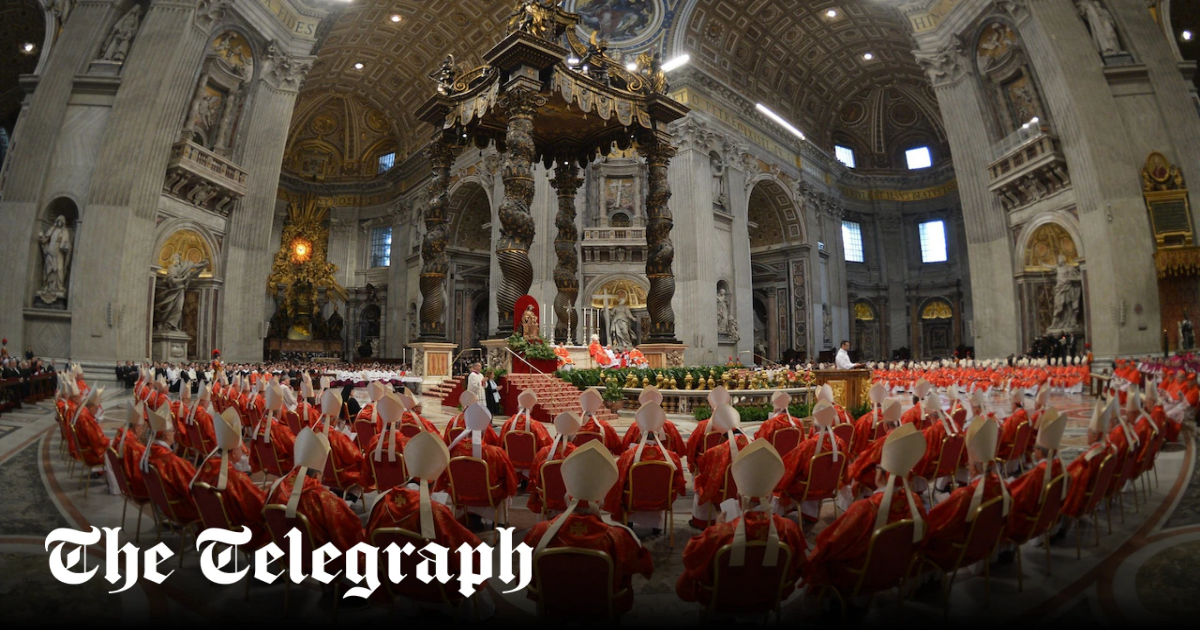News of Pope Francis’s death at the age of 88 will have affected the many millions of Catholics across the world.
The death of a pope triggers a formal and lengthy period of mourning before cardinals gather to elect a successor.
What is a conclave?
The conclave is the arcane and secretive process of choosing the next Pope. Cardinals from around the world will gather beneath the frescoed ceilings of the Sistine Chapel in the heart of the Vatican, where they will vote for Pope Francis’s successor by secret ballot.
The chapel will have been swept for bugs and other recording devices and cardinals will be banned from using laptops or mobile phones.
For the last conclave in 2013, which followed the historic resignation of Pope Benedict XVI, an oath of secrecy was taken by members of the Swiss Guard and Vatican gendarmerie, the city state’s police force, as well as the doctors and nurses who assisted elderly or infirm cardinals.
A Vatican master of ceremonies will pronounce the words “Extra omnes” (Everyone out), ordering staff and aides to leave the chapel so that only the cardinal electors remain.
The conclave must be held between 15 and 20 days after the Pope’s death. It is a centuries-old tradition that mixes theatre, theology and the utmost secrecy.
For a few days it will restore Rome’s ancient title – “caput mundi” or capital of the world – as 1.2 billion Catholics await the result of the election.
How many cardinals are there?
There are currently 252 cardinals, but only those under the age of 80 are eligible to vote.
This leaves 135 cardinals, coming from 71 different countries, with the decision to select the next Pope.
The new Pope will be elected by a secret ballot. The cardinals, known as “princes of the Church”, will be seated on chairs made of cherry wood behind 12 wooden tables covered in satin and cloth.
There will be a 13th table positioned in front of the altar, on which will be placed a silver urn into which the cardinals will cast their ballot papers.
Each cardinal writes his choice on a ballot paper inscribed with the words “Eligo in summum pontificem” – “I elect as Supreme Pontiff”.
One ballot is held on the first day of the papal conclave.
For the rest of the conclave they will vote four times a day – twice in the morning and twice in the afternoon – burning their ballot papers after every second vote, until they reach a two-thirds majority.
What does the white smoke mean?
Two metal stoves are installed inside the 15th-century chapel, connected by a long metal pipe to the chimney on the roof.
One stove will be used for the burning of ballot papers after cardinals cast their votes, while the other will be used to emit coloured smoke – black to signify that the cardinals have yet to reach agreement, white to announce “habemus papam” – we have a Pope.
Chemicals are used to create the different coloured smoke, although to avoid ambiguity, the white smoke that signifies a Pope has been elected will be accompanied by the ringing of St Peter’s bells.

Once the two-thirds majority has been achieved, the most senior cardinal will ask the chosen cardinal if he is prepared to become Pope.
If the answer in Latin is “Accepto” (I Accept), he is taken into a side room known as the Stanza delle Lacrime, or Room of Tears, so named because many have wept at the enormity of the task they face.
There, he is given help to take off his scarlet cassock and change into the white vestments of the papacy.
He also has to decide by what name he wishes to be called – the name-changing tradition dates back to the sixth century when a priest named Mercury who was elected Pope felt his name was too pagan and changed it to John II.
Declaring the new Pope
The senior cardinal will then step out onto the balcony of St Peter’s Basilica and declare in Latin: “Annuntio vobis gaudium magnum. Habemus papam!” (I announce to you a great joy. We have a Pope!).
He will announce the name of the elected cardinal and the papal title he has chosen.
The new Pope then gives his first blessing, watched by huge crowds in St Peter’s Square and on television by millions around the world.
The ceremony to install the Pope takes place a few days later.
